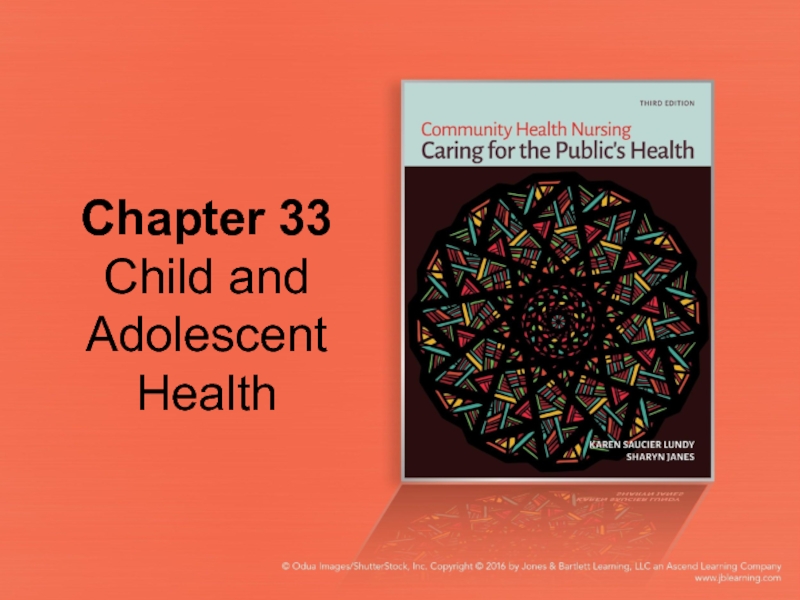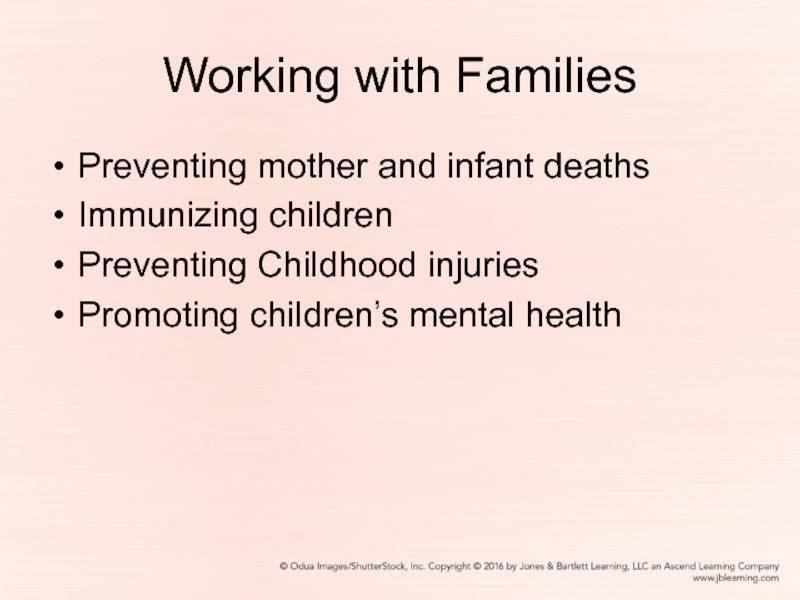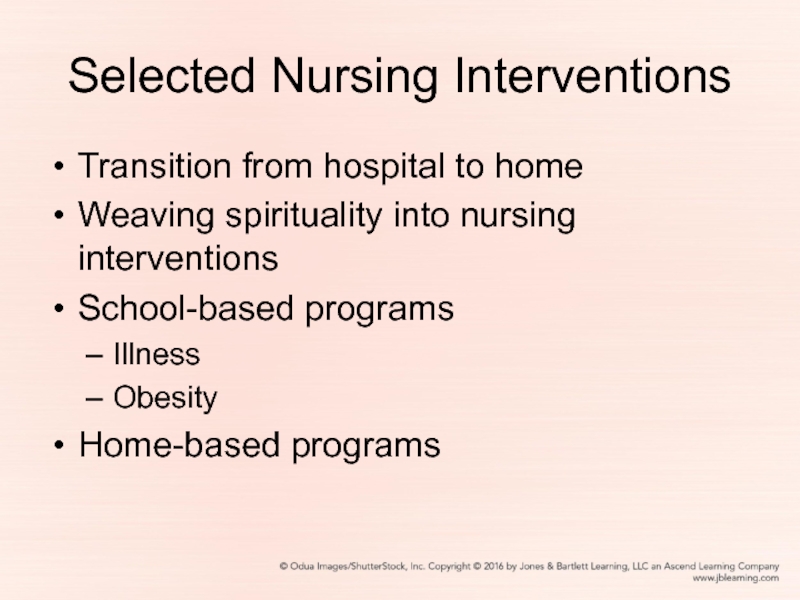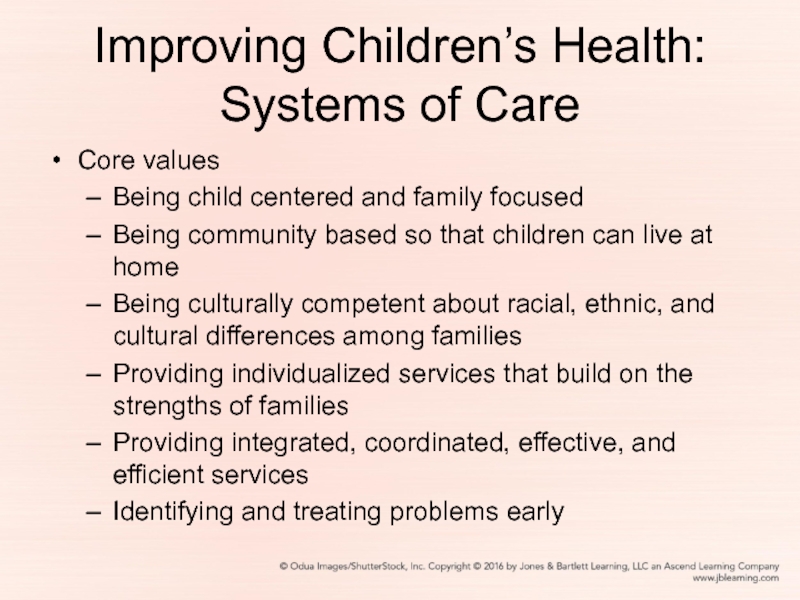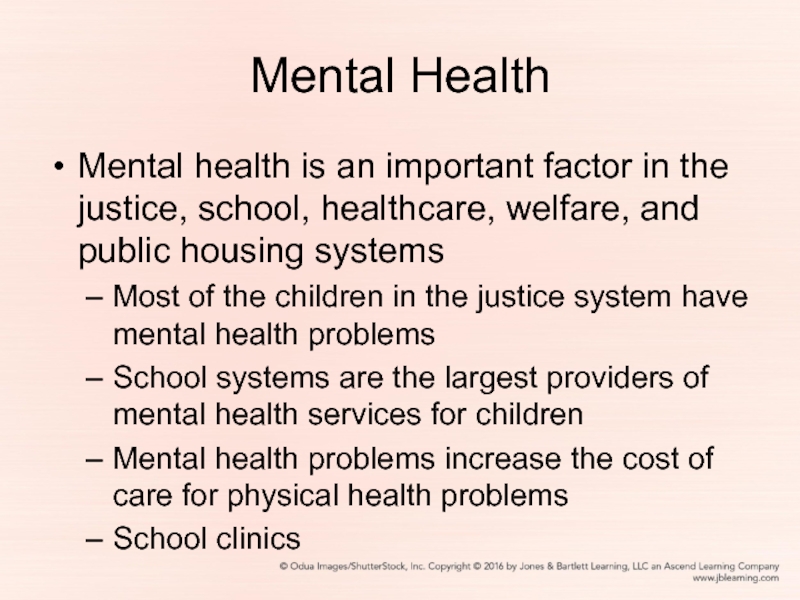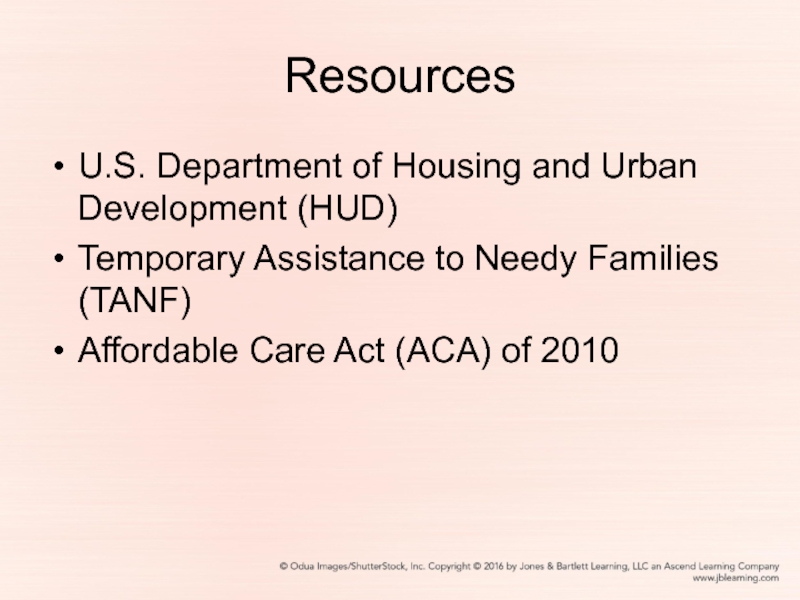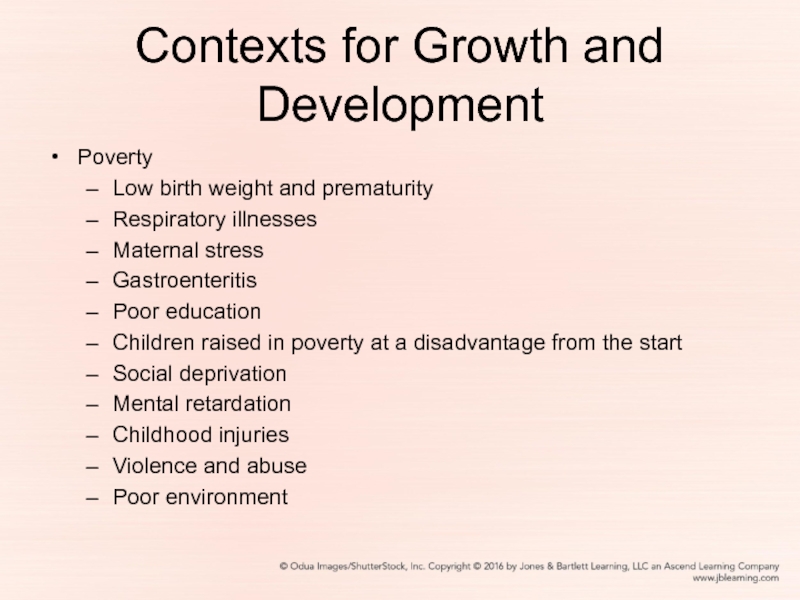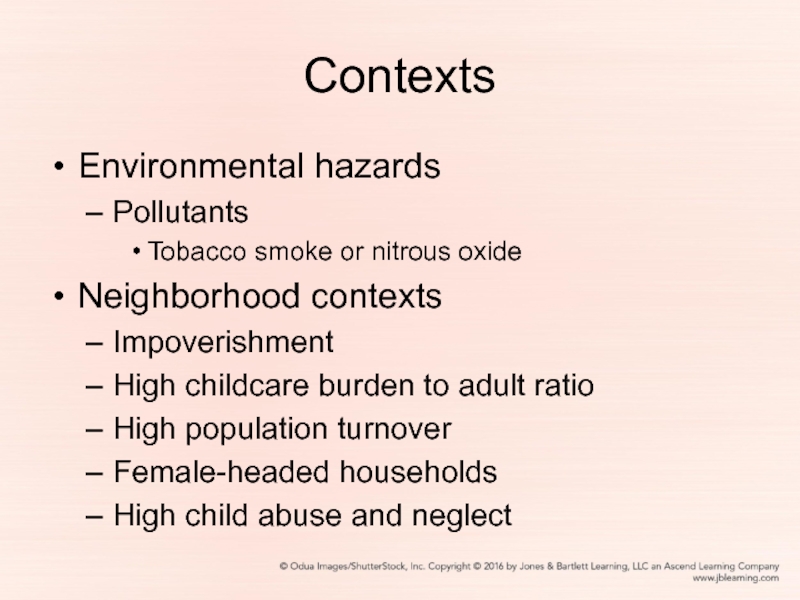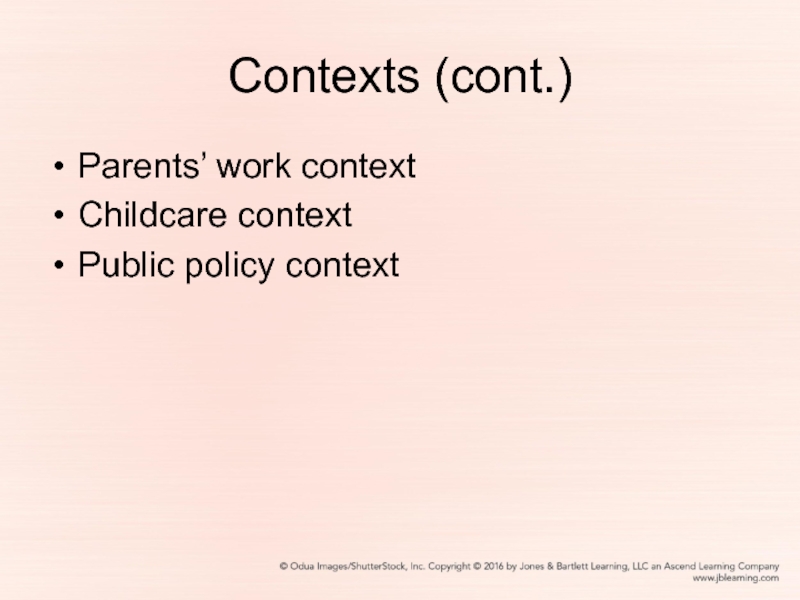- Главная
- Разное
- Дизайн
- Бизнес и предпринимательство
- Аналитика
- Образование
- Развлечения
- Красота и здоровье
- Финансы
- Государство
- Путешествия
- Спорт
- Недвижимость
- Армия
- Графика
- Культурология
- Еда и кулинария
- Лингвистика
- Английский язык
- Астрономия
- Алгебра
- Биология
- География
- Детские презентации
- Информатика
- История
- Литература
- Маркетинг
- Математика
- Медицина
- Менеджмент
- Музыка
- МХК
- Немецкий язык
- ОБЖ
- Обществознание
- Окружающий мир
- Педагогика
- Русский язык
- Технология
- Физика
- Философия
- Химия
- Шаблоны, картинки для презентаций
- Экология
- Экономика
- Юриспруденция
Child and Adolescent Health. Working with Families презентация
Содержание
- 1. Child and Adolescent Health. Working with Families
- 2. Working with Families Preventing mother and infant
- 3. Selected Nursing Interventions Transition from hospital to
- 4. Improving Children’s Health: Systems of Care Core
- 5. Mental Health Mental health is an important
- 6. Resources U.S. Department of Housing and Urban
- 7. Contexts for Growth and Development Poverty Low
- 8. Contexts Environmental hazards Pollutants Tobacco smoke or
- 9. Contexts (cont.) Parents’ work context Childcare context Public policy context
Слайд 2Working with Families
Preventing mother and infant deaths
Immunizing children
Preventing Childhood injuries
Promoting children’s
mental health
Слайд 3Selected Nursing Interventions
Transition from hospital to home
Weaving spirituality into nursing interventions
School-based
programs
Illness
Obesity
Home-based programs
Illness
Obesity
Home-based programs
Слайд 4Improving Children’s Health: Systems of Care
Core values
Being child centered and family
focused
Being community based so that children can live at home
Being culturally competent about racial, ethnic, and cultural differences among families
Providing individualized services that build on the strengths of families
Providing integrated, coordinated, effective, and efficient services
Identifying and treating problems early
Being community based so that children can live at home
Being culturally competent about racial, ethnic, and cultural differences among families
Providing individualized services that build on the strengths of families
Providing integrated, coordinated, effective, and efficient services
Identifying and treating problems early
Слайд 5Mental Health
Mental health is an important factor in the justice, school,
healthcare, welfare, and public housing systems
Most of the children in the justice system have mental health problems
School systems are the largest providers of mental health services for children
Mental health problems increase the cost of care for physical health problems
School clinics
Most of the children in the justice system have mental health problems
School systems are the largest providers of mental health services for children
Mental health problems increase the cost of care for physical health problems
School clinics
Слайд 6Resources
U.S. Department of Housing and Urban Development (HUD)
Temporary Assistance to Needy
Families (TANF)
Affordable Care Act (ACA) of 2010
Affordable Care Act (ACA) of 2010
Слайд 7Contexts for Growth and Development
Poverty
Low birth weight and prematurity
Respiratory illnesses
Maternal stress
Gastroenteritis
Poor
education
Children raised in poverty at a disadvantage from the start
Social deprivation
Mental retardation
Childhood injuries
Violence and abuse
Poor environment
Children raised in poverty at a disadvantage from the start
Social deprivation
Mental retardation
Childhood injuries
Violence and abuse
Poor environment
Слайд 8Contexts
Environmental hazards
Pollutants
Tobacco smoke or nitrous oxide
Neighborhood contexts
Impoverishment
High childcare burden to adult
ratio
High population turnover
Female-headed households
High child abuse and neglect
High population turnover
Female-headed households
High child abuse and neglect
